The curly-tailed lizard will eat almost anything, which means it can thrive in foreign territories — but it also means trouble for Florida's native lizards.

Holley and Chris Melton/FlickrThe curly tail lizard can grow up to 11 inches long.
Curly tail lizards can easily be spotted thanks to their peculiarly curled tails, but the species is also famous for its ability to eat just about anything — including greasy human food. Unfortunately, this diet has had dire consequences for the animal.
For instance, one especially bloated lizard that researchers spotted just this past month. At first, it was assumed that the lizard was pregnant, but later tests showed that it was actually constipated with a ball of poop that amounted to 80 percent of its body weight.
That curly tail lizard now holds the record for the largest mass of poop ever discovered in a living animal, but her condition might also reveal a threat to her species.
What Is A Curly Tail Lizard?
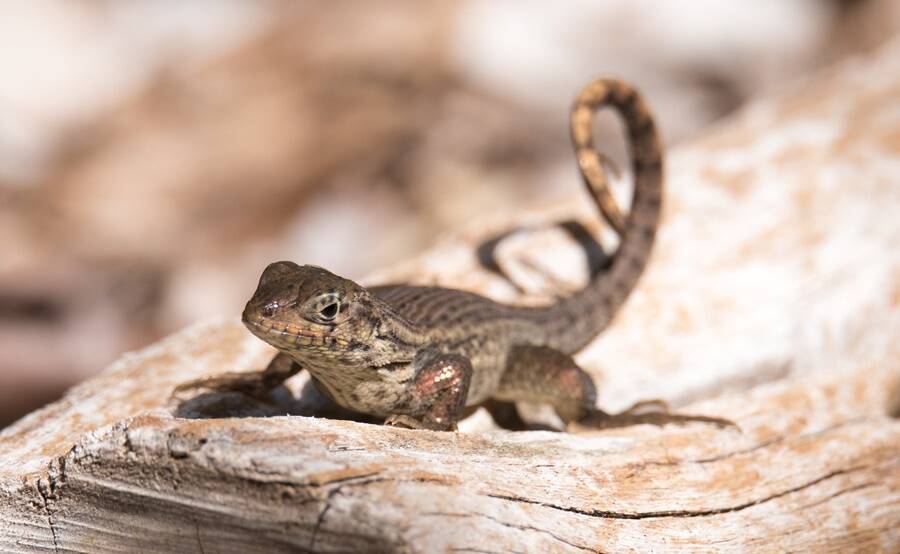
Tony CC Gray/FlickrLarge swathes of northern curly-tailed lizards have invaded parts of Florida.
The curly tail lizard, or Leiocephalus carinatus, is endemic to the Bahamas, Turks and Caicos, Cuba, the Cayman Islands, Haiti, and other nearby islands. More recently, however, growing populations of the curly-tailed lizard have been found in parts of Florida.
As their name suggests, these reptiles are easily identified by their curly tails. Past studies on the species show that their unique tail serves two functions. Firstly, the tail acts as a defense mechanism against predators. Secondly, it’s used to signal to other curly tail lizards.
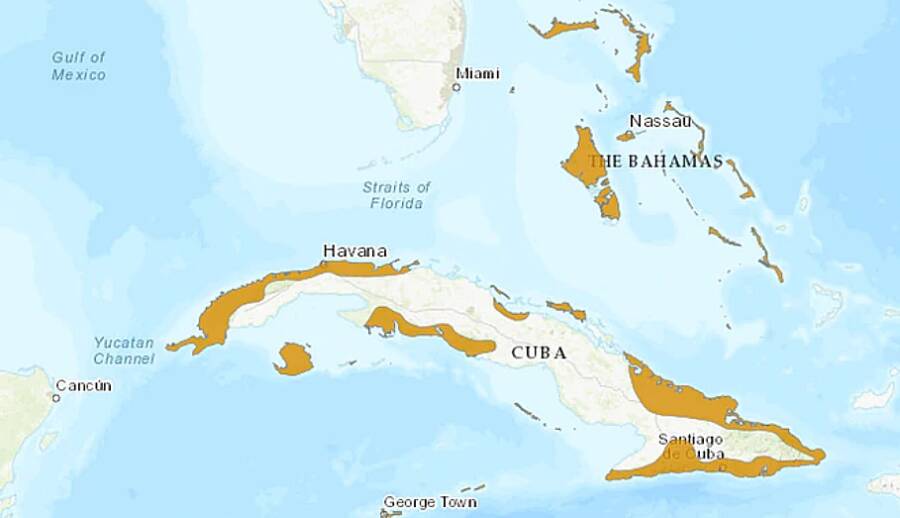
International Union for Conservation of NatureA map of the curly-tailed lizard’s native habitat.
The lizards typically grow up to 11 inches long and are known to prey on smaller species, like anoles and various insects such as grasshoppers, ants, and beetles. Like most lizards, the curly tail is a patient predator, meaning they can stay perfectly still until an unsuspecting victim gets close enough for an attack.
These lizards are also considered to be super adaptable due to their omnivorous diet. They have been found in densely populated urban areas chowing down on human food.
Indeed, their indiscriminate palate has contributed to their growing population in warm-climate areas outside their native land, like on the mainland U.S. But their increasing presence in new territories could spell disaster for other animals native to those local environments.
An Invasive Species
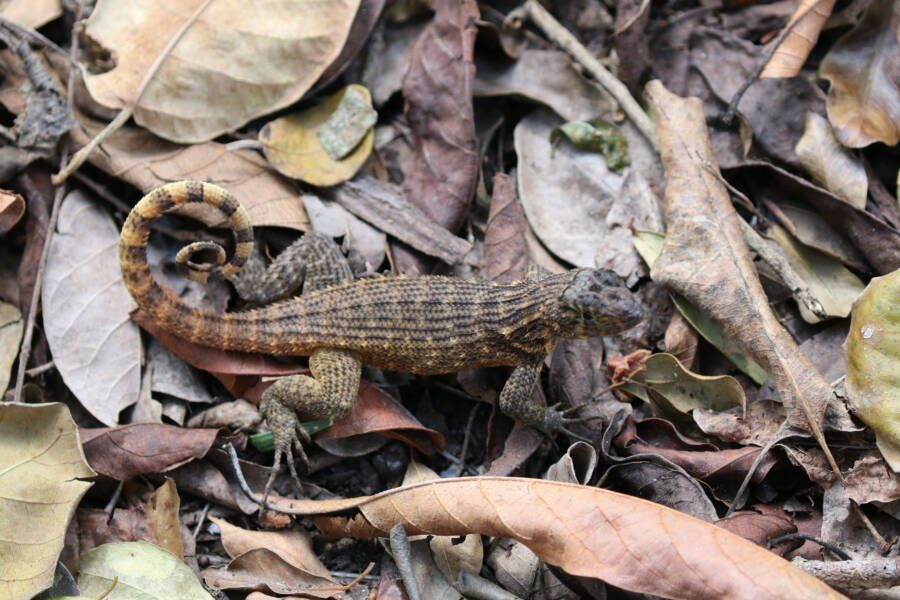
Wikimedia CommonsThese lizards will feed on anything, including sand.
According to the Florida Fish and Wildlife Commission, northern curly-tailed lizards first arrived in the Sunshine State when they escaped from a zoo in 1935. Of course, that single event is not responsible for the lizard’s now-booming population.
About a decade after the zoo incident, a sugar-cane farmer on Palm Beach released 40 curly tail lizards to eradicate the bugs on his farm. It was an ineffective method of pest control and, by 1968, the loose lizards had crossed onto mainland Florida.
More recently, a group of emboldened researchers deliberately introduced the species to 16 remote islands around the Bahamas in order to compare the lizard’s interaction with two other species: the green anole (Anolis smaragdinus) and the brown anole (Anolis sagrei).
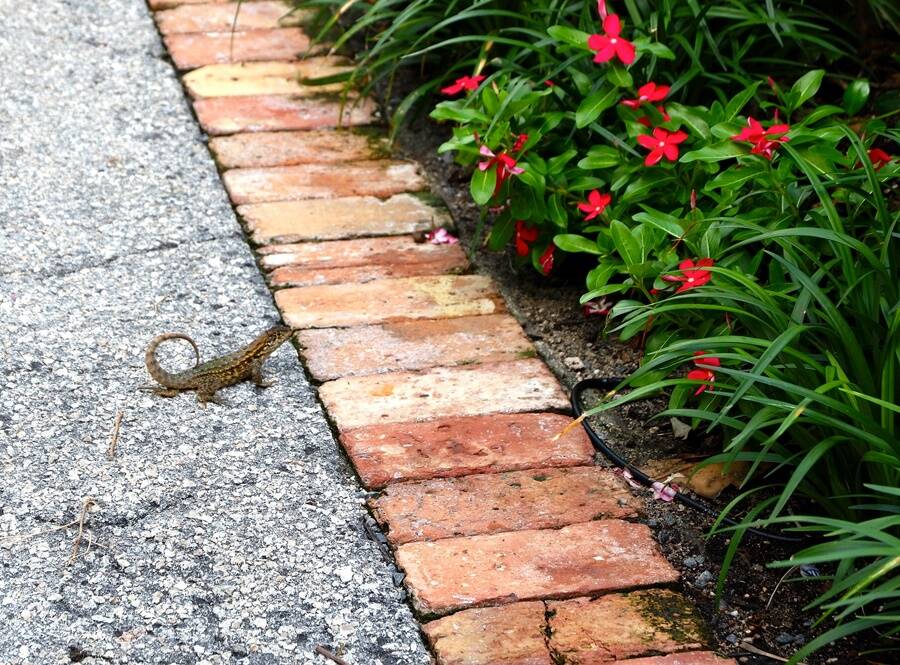
Cayobo/FlickrCurly tail lizards are a common sight in public places across Florida.
The study found that the curly tail lizards thrived while the brown anoles took refuge from them in the trees, which effectively pushed out the green anoles from their natural habitat up in the canopies. Faced with a new predator and nowhere to go, the green anole went nearly extinct across the islands.
Now, thousands of curly-tailed lizards inhabit the territories of Broward County to central Martin County in Florida. Local scientists are concerned that similar events could happen to their native critters as the curly tail lizard takes over the state.
“They’re the T-Rex of our little ground critters,” Hank Smith, a wildlife biologist for the Florida Park Service, told the Sun-Sentinel in 2006. “They’re larger than our native lizards that occur along the coastline: the green anole, the green racerunner. Wherever I find it, I find no other lizards.”
But unlike the T-rex, these small predators appear to be thriving.
A Domesticated Diet Of Trash And Other Lizards
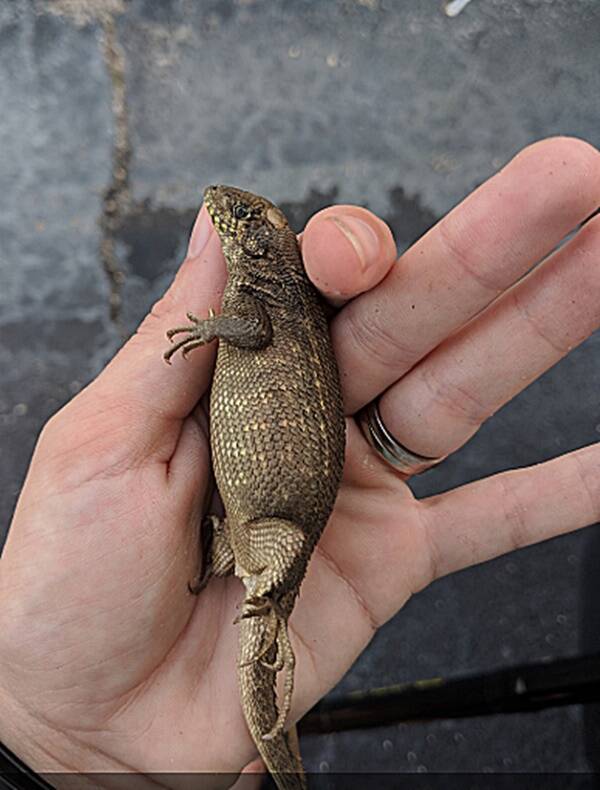
Natalie ClaunchAbout 80 percent of this curly tail lizard’s body mass was fecal matter.
Curly tail lizards that have since invaded populated areas of Florida have been known to eat just about any kind of food humans have thrown out.
The rotund lizard that Natalie Claunch, a Ph.D. candidate at the University of Florida, discovered at a pizza parlor, turned out to be full of insects, an anole, sand, and pizza grease.
“I was blown away by how little room there was left for all the other organs – if you look at the 3D model, it has only a tiny space leftover in its ribcage for the heart, lungs, and liver,” said Edward Stanley, director of the Florida Museum’s Digital Discovery and Dissemination Laboratory. “It must have been a very uncomfortable situation for the poor lizard.”
A CT scan revealed that the entire middle-body of the lizard was filled with a single enormous fecal bolus. Researchers decided to euthanize the lizard, seeing as the giant ball of feces would never have been passed naturally.
A post-mortem dissection revealed that the curly-tailed lizard’s internal organs had “visibly atrophied, notably the liver and ovaries.”
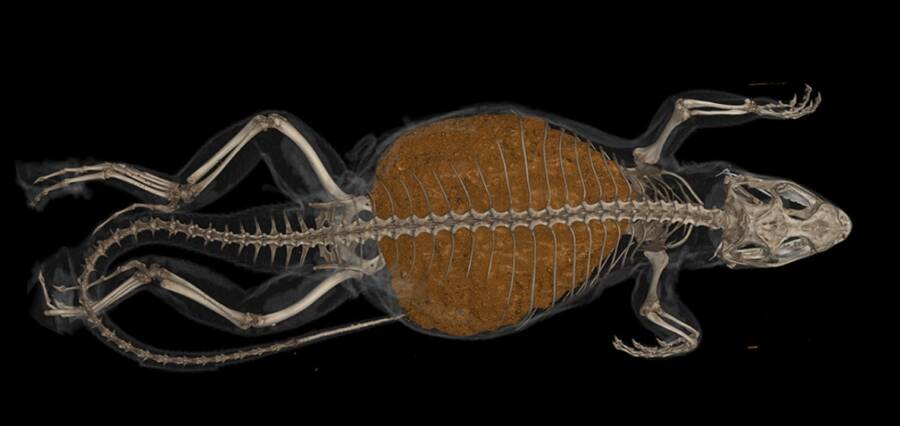
Edward Stanley/Florida MuseumA CT scan of the fecal bolus suffocating the bloated lizard found by researchers. In a similar case, a separate team examined a Burmese python with a fecal bolus that was 13 percent of its body mass.
This isn’t the first time a curly tail lizard has almost eaten itself to death. Twice before, Claunch’s team found curly-tailed lizards constipated with turds that comprised more than 30 percent of their body weight.
As of now, these lizards are thriving across urban Florida, but their penchant to eat just about anything could spell danger for them in the future.
Next up, check out this story of a seven-foot monitor lizard that terrorized a Florida family’s home. Then, meet the armadillo lizard: a mini-dragon that curls up like an armadillo.





